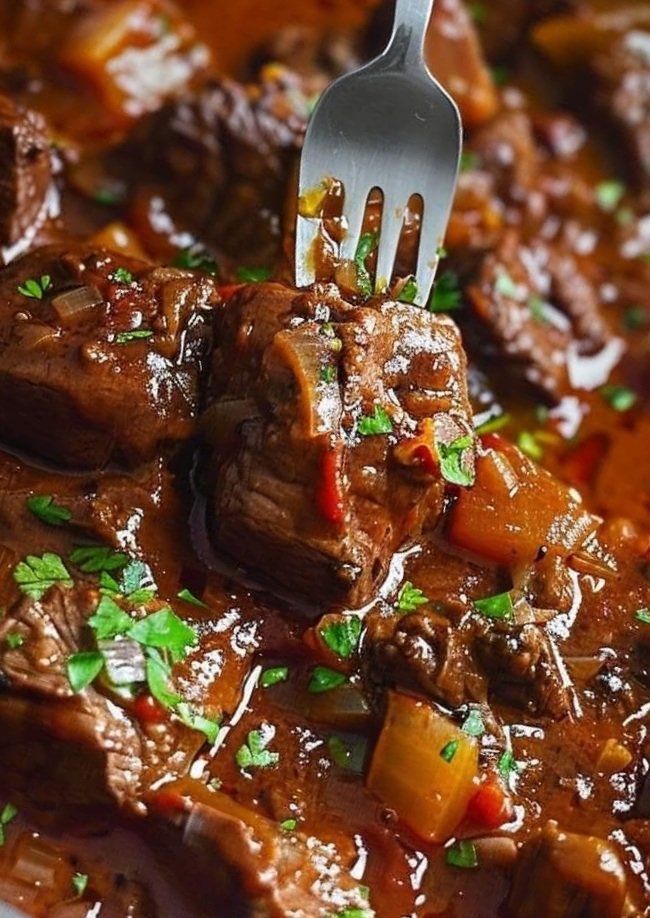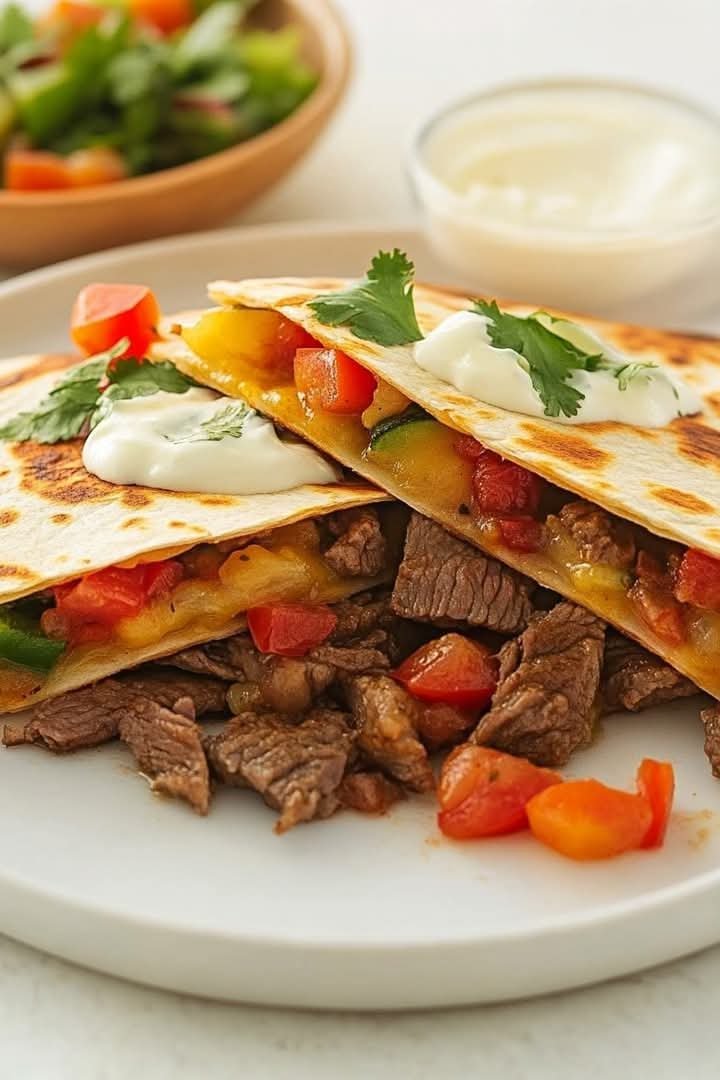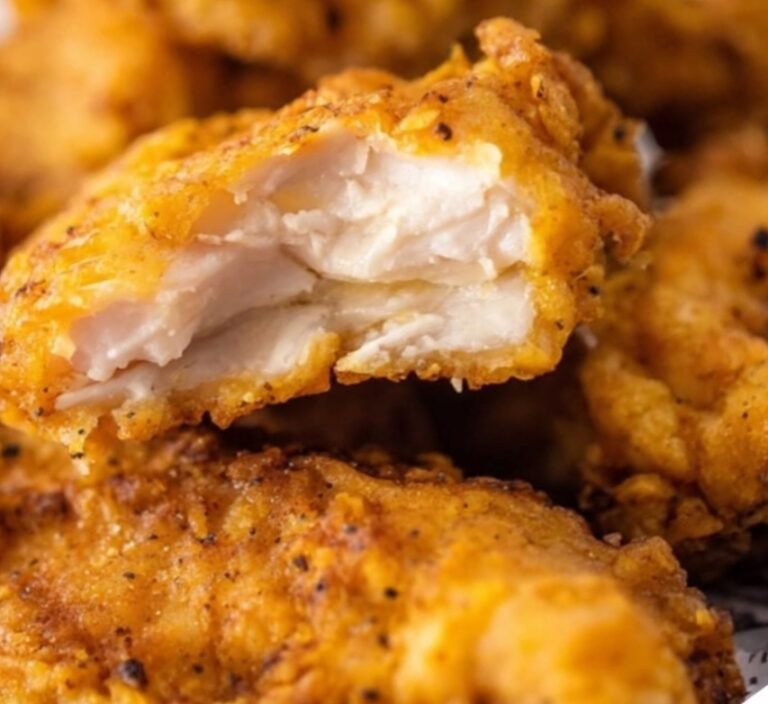Perfect German Goulash

Step-by-Step Guide
To make your post detailed, include these steps:
- Prepare ingredients: Cut 1 1/2 pounds of beef into chunks, dice onions, and mince garlic.
- Brown the beef in oil, then sauté onions and garlic.
- Deglaze with 1 cup red wine, add tomato paste, paprika, and broth, then simmer for 1.5-2 hours.
- Thicken with cornstarch if desired, and serve hot.
Tips for Engagement
- Add cooking tips, like using beef chuck for tenderness and browning for flavor.
- Include variations, such as adding carrots or using dark beer for a Bavarian twist.
- Share cultural background: German Goulash evolved from Hungarian roots, focusing on beef and onions.
- Suggest sides like spaetzle or potato dumplings, and pair with a red wine like Syrah.
Detailed Recipe with Step-by-Step Instructions
The recipe you provided is a solid foundation, and we can enhance it with additional details for clarity and engagement. Here’s an expanded version, incorporating insights from various sources to ensure authenticity and depth.
Ingredients:
- 1 1/2 pounds stewing beef (preferably beef chuck or round roast), cut into 1/2 to 1 inch chunks
- 1 tablespoon oil (vegetable, canola, or bacon fat for extra flavor)
- 1 large yellow onion (about 400 g), diced
- 2 cloves garlic, minced
- 1 cup dry red wine (e.g., cabernet sauvignon, pinot noir) or dark beer (for a Bavarian twist)
- 3 tablespoons tomato paste
- 3 tablespoons Hungarian sweet paprika (use high-quality imported paprika for best results, such as this option)
- 1/2 teaspoon dried marjoram
- 1 teaspoon salt
- 1/2 teaspoon freshly ground black pepper
- 2 cups beef broth
- 1 bay leaf
- 2 teaspoons cornstarch dissolved in 2 tablespoons water (optional, for thickening)
- Optional vegetables: 1 carrot (diced), 1 celery stalk (diced), 1/2 bell pepper (diced), 1 red chili (finely chopped for heat)
- Optional spices: 1 teaspoon caraway seeds, 1/2 teaspoon lemon zest
Instructions:
- Prepare the Ingredients: Start by cutting the beef into 1/2 to 1 inch chunks for even cooking. Dice the onion, mince the garlic, and prepare any optional vegetables like carrots or bell peppers. This mise en place ensures a smooth cooking process.
- Brown the Meat: Heat 1 tablespoon of oil in a large heavy-bottomed pot or Dutch oven over medium-high heat. Add the beef chunks in batches to avoid overcrowding, which ensures a good sear. Brown the meat on all sides until dark brown, then transfer to a plate and set aside. This step is crucial for developing the rich flavor through the Maillard reaction.
- Sauté the Aromatics: In the same pot, add a bit more oil if needed, and sauté the diced onions until they are soft and golden brown, about 6-8 minutes. Add the minced garlic and any optional vegetables (carrot, celery, bell pepper), cooking for another 5 minutes to release their flavors.
- Deglaze the Pot: Pour in 1 cup of red wine (or dark beer for a Bavarian variation) and scrape up any browned bits from the bottom of the pot, known as fond. These bits are concentrated flavor, and deglazing with wine or beer enhances the sauce’s depth. Let it reduce by half, about 3-4 minutes.
- Add Seasonings and Broth: Stir in 3 tablespoons of tomato paste, 3 tablespoons of Hungarian sweet paprika, 1/2 teaspoon dried marjoram, 1 teaspoon salt, and 1/2 teaspoon black pepper. If using, add 1 teaspoon caraway seeds or 1/2 teaspoon lemon zest for extra flavor. Pour in 2 cups of beef broth, add 1 bay leaf, and return the browned beef to the pot, ensuring all pieces are submerged.
- Simmer: Bring the mixture to a boil, then reduce the heat to low, cover, and simmer for about 1.5 to 2 hours, or until the beef is fork-tender. For a thicker sauce, uncover the pot for the last 30 minutes to let it reduce naturally.
- Thicken the Sauce (Optional): If you prefer a thicker consistency, mix 2 teaspoons of cornstarch with 2 tablespoons of water and stir it into the goulash. Simmer for another 5-10 minutes, stirring constantly to prevent lumps. Some variations suggest adding a dollop of sour cream or crème fraîche for creaminess, though quantities may vary.
- Serve: Remove the bay leaf before serving. Serve the goulash hot, over your choice of side dish, such as spaetzle, egg noodles, or boiled potatoes, and garnish with fresh parsley for color.
Cooking Tips for Perfect German Goulash
To ensure your readers achieve the best results, include these practical tips:
- Choose the Right Beef: Beef chuck is ideal due to its marbling, which renders tender meat after slow cooking. Round roast can also work, but avoid lean cuts like sirloin, as they may dry out.
- Browning is Key: Take time to brown the meat and onions thoroughly. This caramelization builds the fond, adding depth and complexity to the sauce.
- Paprika Matters: Use sweet Hungarian paprika for authenticity. Hot or smoked paprika can alter the flavor, so reserve them for variations unless specified.
- Deglazing: Don’t skip deglazing with wine or beer; it releases the fond and enhances flavor. If avoiding alcohol, use additional beef broth, though the depth may differ.
- Slow and Low: Simmer for at least 1.5 hours to ensure tender beef. The longer it cooks, the more the flavors meld, making it ideal for batch cooking.
- Thickening Options: The sauce thickens naturally if reduced uncovered, but a cornstarch slurry or sour cream can adjust consistency for preference.
Variations to Enhance Your Recipe
To cater to diverse tastes, suggest these variations:
- Add Vegetables: Include diced carrots, celery, or bell peppers for added nutrition and flavor. Some recipes, like those from Southern Germany, incorporate red chili for a slight kick.
- Bavarian Twist: Replace red wine with dark beer and add a pinch of coarsely ground caraway seeds for a unique regional flavor.
- Creamy Goulash: Stir in 1-2 tablespoons of sour cream or crème fraîche toward the end for a richer, creamier sauce, balancing the acidity of the tomatoes.
- Spicy Version: Add a pinch of hot paprika or cayenne pepper alongside sweet paprika for heat, appealing to spice lovers.
- Vegetarian Option: Substitute beef with mushrooms, lentils, or tofu, adjusting cooking times and liquid for a meat-free version.
Serving Suggestions and Pairings
German Goulash is traditionally served with sides that complement its richness. Here are some options to include:
- Spaetzle: Soft German egg noodles, perfect for soaking up the sauce. Find a recipe at spaetzle.
- German Potato Dumplings (Kartoffelknoedel): Dense, hearty dumplings made from potatoes and flour, ideal for a traditional meal. See potato dumplings.
- German Bread Dumplings (Semmelknoedel): Light, fluffy dumplings made from stale bread, another classic choice. Check bread dumplings.
- Egg Noodles: A simple, quick option that pairs well with the stew.
- Boiled Potatoes: A rustic side that keeps the dish comforting and traditional.
- Crusty Bread: Perfect for sopping up the sauce, adding a textural contrast.
For a complete meal, consider serving with pickled red cabbage for tanginess, sauerkraut for a traditional German touch, or green peas for color and freshness. Pair with a full-bodied red wine like Syrah or Merlot, which complements the dish’s richness, or a lighter Pinot Noir for balance.
Cultural and Historical Context
Goulash’s origins trace back to Hungary, where it was a staple for cattle herders who cooked diced meat with onions and spices in large kettles. Over time, it spread to neighboring countries, including Germany, where it evolved into Rindergulasch. Unlike Hungarian goulash, which often includes potatoes and sometimes carrots, German versions focus on beef, onions, and a paprika-flavored sauce, reflecting local preferences. This dish is a symbol of German comfort food, often served at family gatherings or in cozy restaurants, especially during fall and winter. Its popularity highlights Germany’s love for hearty, slow-cooked meals, akin to other classics like Sauerbraten or Wiener Schnitzel.
Nutritional Information
While exact nutritional values depend on ingredients and portion sizes, here’s a general overview:
- Calories: Approximately 300-400 per serving, depending on portion size and sides.
- Protein: High, due to the beef content, supporting muscle health.
- Fat: Moderate, especially with beef chuck, contributing to satiety.
- Carbohydrates: Low, unless served with noodles or dumplings, adding energy.
- Fiber: Low, but can be increased by adding vegetables like carrots or bell peppers for digestive health.





